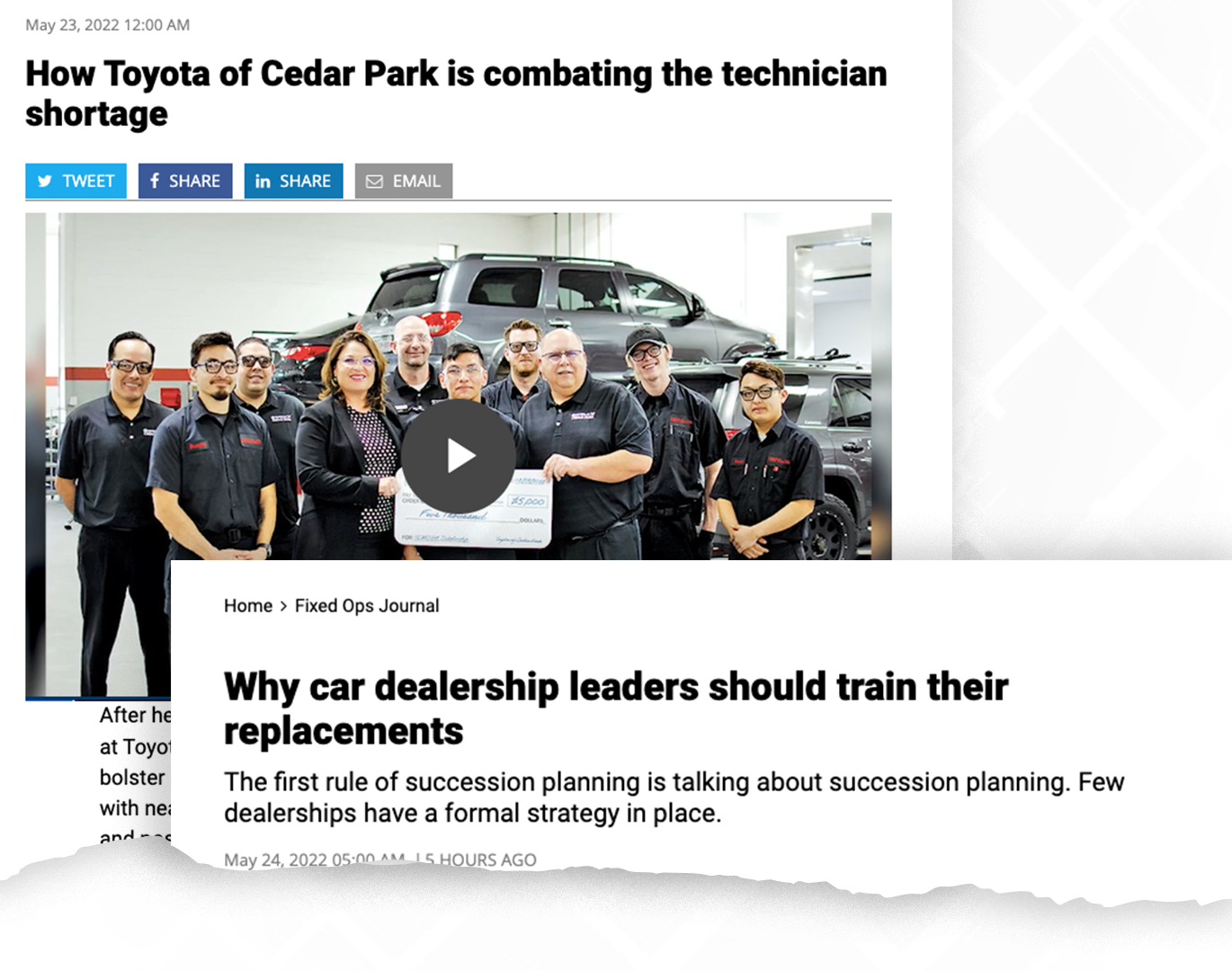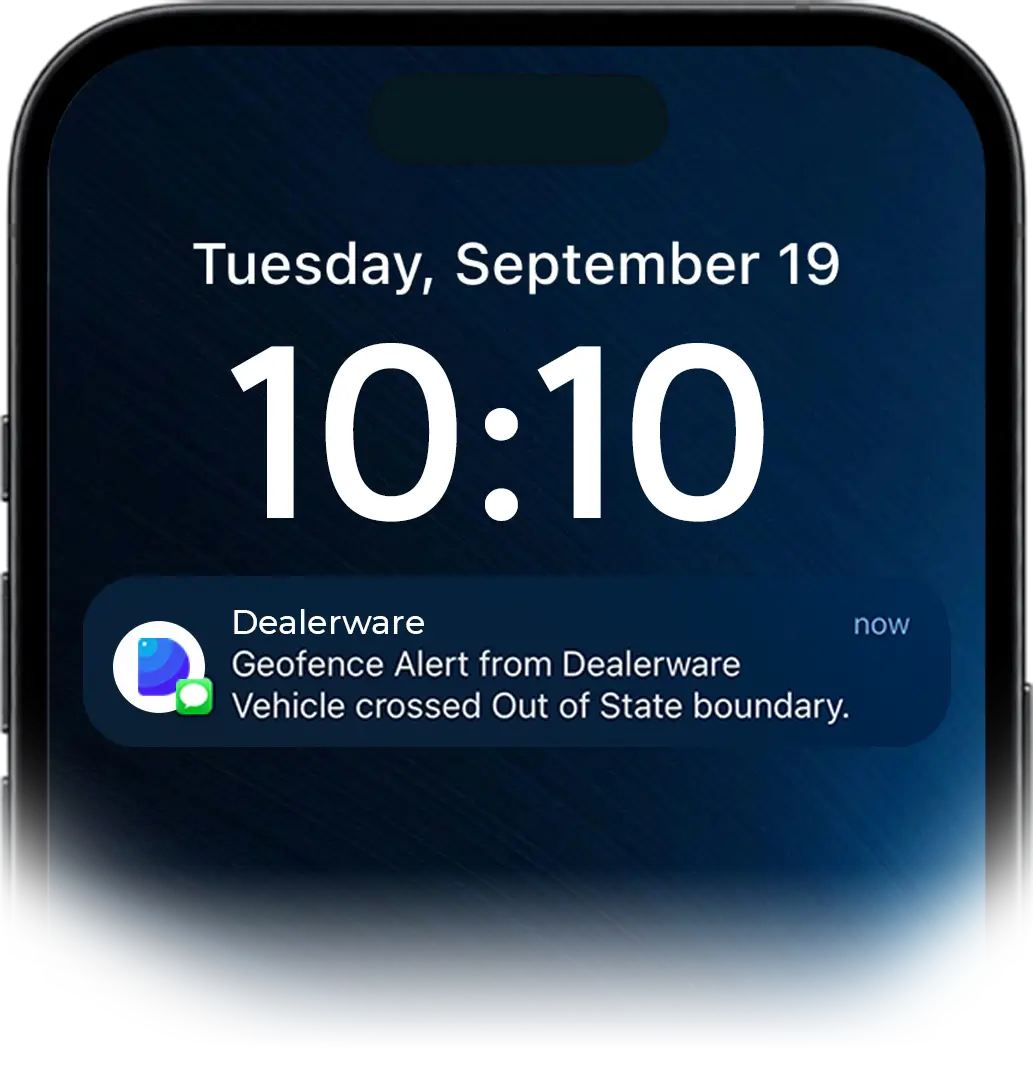The first time Julie Herrera heard about a “technician shortage” was a decade ago, and she says she knew solving it was the dealer’s job. Now Herrera, Dealer Principal at Toyota of Cedar Park, works with a local high school to introduce students to the automotive trade, train them in dealership service bays and even pay for ASE certification tests.
If you’re struggling to get technicians in your shop, she says, sit down with your team and make a plan. Bringing high schoolers in might cost a few thousand a year, Herrera said, but “You have to remember, that technician is taking care of your customer who is going to continue to come to you… that’s when you’re going to make a little bit more money and every dealer knows that.
So, what’s your strategy for bringing in new talent?
Personnel planning was the subject of two recent Automotive News pieces focused on solving employee retention challenges.
While Herrera’s story centered on her strategy to attract and train entry-level employees, her points above resonate for all team decisions: make a plan, and remember that investing small amounts in employee growth can have big returns down the road.
The same is true for management-level employees, who carry the company’s culture “The first rule of succession planning is talking about succession planning,” begins the article “Why car dealership leaders should train their replacements.”
AutoNews spoke with Kendall Rawls, director of the Orland-based automotive consulting firm the Rawls Group, about her work to develop succession strategies with dealerships. One of her comments in particular stands out: “Too often… owners and managers think they’re too busy growing their business to plan for the future and put the right people in place to make it happen.”
At Dealerware, we use a goal-setting method known as OKRs, Objectives and Key Results. The method is mean to help everyone in an organization understand how their work contributes to the overarching objectives of the business, then plan their efforts around what activities — key results — will have the most positive impact.
Elements of the OKR strategy could help dealership teams understand how they’re contributing to some of the common objectives for fixed operations: more customers, more revenue and more valuable ROs.
What to look for
Among service drive employees, key performance metrics like average length of loan, number of contracts written and average repair order value can actually help pinpoint top performers.
Average length of loan
Time is money, so shorter is usually better when it comes to the average length of a loaner or rental contract. With Dealerware, service managers, fixed ops directors and other admin-level users can see all the loaner contracts written by each employee on the team, and Dealerware also shows an average length of loan for each employee.
Typically we see contracts running a few days, varying based on the type of work being completed. Top performers should be turning vehicles over quickly, keeping their lengths of loans shorter than the rest of the team (and helping more customers in the process).
Number of contracts
Employees that handle more contracts are generally doing a good job using the fleet. However, there’s a fine balance between effectively using fleet cars and throwing keys at every customer that walks in the door. If the employee with the most contracts has an average length of loan of a day when the rest of the team averages four days, they’re probably being too liberal with loaners.
So, the right number of contracts is a bit of a floating target, but managers should look for employees writing the most contracts with a well-balanced average length of loan to identify top performers.
Repair order values
Determining average repair order volume for each contract might take two steps, but combining Dealerware data about loaner contracts with DMS data about repair orders can show you which of your employees gets the best return on each loaner contract they write.
Armed with that information, you can understand what they do differently from the rest of the team and provide them an opportunity to coach other team members to improve overall performance.
Using data to chart growth
Giving team members opportunities to lead is a great way to demonstrate a commitment to their growth and to them as long-term parts of your team.
Service departments can have high turnover, and that makes it more difficult to deliver great service.
As you identify and empower leaders on your team, you can measure change and growth by watching the same figures as above. Length of loan should decrease while the number of contracts or average contract value should increase.
Another important point to monitor is your customer’s satisfaction. From CSI scoring to informal surveying at the end of a contract can all help you measure customer satisfaction and show the impact of better team management to the business.

Management-level employees can use both the fleet performance metrics and customer satisfaction information to support their own career growth too.
After all, great management looks like identifying the key activities that contribute to business growth, elevating team leaders to institute best practices, then measuring impact and planning continuous improvement.
Want more info on the data Dealerware gives you to improve your team’s performance, get more from your fleet and make a bigger bottom-line impact for your dealership? Download Dealerware’s “Insights to Action” playbook to start making strategic decisions with data.








